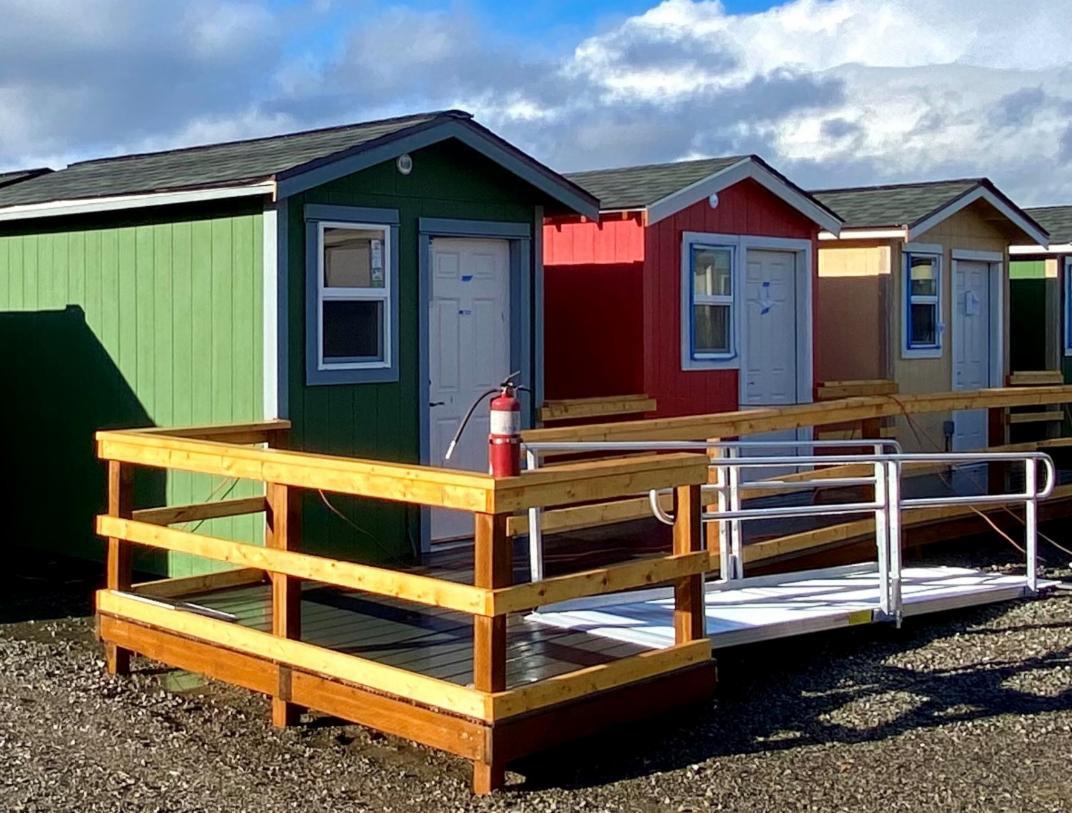




The family of Sherese Allen, a woman fatally struck by a vehicle while resting on the beach last fall, has filed a wrongful death lawsuit against the City of Santa Monica, alleging the city’s negligence created a hazardous environment that contributed to her death.
The complaint, filed in the Los Angeles Superior Court, claims that the city failed to implement adequate measures to prevent vehicles from accessing the beach, despite a history of similar incidents. It also names the driver, Yuyang Sun, and several individuals associated with him as defendants.
According to the lawsuit, Allen was

lying on the sand near Santa Monica Beach on October 17, 2024, when Sun allegedly drove his vehicle onto the beach and began making high-speed circular motions in the sand. The complaint alleges that Sun, without regard for others present, struck Allen and trapped her beneath the vehicle. She died as a result of her injuries.
The plaintiffs, identified as Eugenia Tate and Antron Allen, argue that the city, which maintains jurisdiction over the beach area,
failed to install barriers or warning systems that could have prevented unauthorized vehicle access to the area. The complaint states that previous incidents and fatalities involving vehicles on the beach should have prompted city officials to take corrective action.
“Eugenia Tate and Antron Allen are Sherese’s surviving parents and were heartbroken to learn of their daughter’s death,” said attorney Elise Sanguinetti of

Arias Sanguinetti. “Yuyang San killed her, and the City of Santa Monica allowed it to happen. The biggest reason for this lawsuit is to convince Santa Monica to finally make the beach safe so that this never happens again.”
Before initiating the lawsuit, Allen’s family filed a formal government claim in March 2025, a required step in seeking legal redress from a public agency. The case is Eugenia Tate and Antron Allen v. The City of Santa Monica, Yuyang Sun, Liang Tang, Jie Ding, in the Los Angeles Superior Court.
After the surprising move from the City Council, six members of Downtown Santa Monica’s board, all of whom were appointed by the City, were abruptly fired, and six new members were installed during the City Council meeting on Tuesday.
Santa Monica’s City Council press representative stated, via email, “The Santa Monica City Council Tuesday approved an emergency motion to replace six councilappointed members of the Downtown Santa Monica, Inc., or DTSM, Board of Directors.
The City Council, consistent with DTSM’s bylaws, state law, and the council’s rules and procedures, also voted to appoint six interim board members and initiate a formal recruitment process for permanent appointees.
Mayor Pro Tem Caroline Torosis and Councilmembers Dan Hall and Barry Snell brought forward the motion, which was heard as a special meeting item before Tuesday’s regularly scheduled agenda.

In a memo sent to the city manager, the three council members stated that the emergency action was necessary ahead of
the appointment of a new CEO to “ensure that DTSM is better positioned to serve the public interest, respond to evolving
downtown challenges, and become a more effective and aligned city partner moving forward.”








































































































































Latest news out of Washington is to take a hard line on the homeless, that are all too prevalent, not just in our town, but across the country, in all communities, large and small. And, indeed, it may be due, in part, to drugs and mental illness issues, but quite probably more to the financial and tax inequities that have bled the middle class and concentrated wealth in an upward spiral to a smaller and smaller segment of our society.
The net result, draining financial capabilities of the middle and lower income levels, combined with higher costs of living (survival?), displacing people from secure housing environments, and perhaps contributing to drug/alcohol abuse, depression, etc., and in some cases to life on the street. Complicated issues, and way above our expertise and capabilities to solve, but it doesn’t mean we can’t speak out about it and offer our perspective from whatever experience we do have. Planning and design problem solving being one.
That said, the following is our SMa.r.t column from September 17, 2017. Eight years ago. And while there may be a couple of things that may have changed, they are minor, and suggest that old adage “the more things change, the more they remain the same,”…or so it seems. The article, edited for brevity: link to full article follows.
“Gimmie Shelter” (to borrow a phrase)
“Oh, a storm is threat’ning
My very life today
If I don’t get some shelter
Oh yeah, I’m gonna fade away”
Some 1,000 homeless people live on Santa Monica’s streets, without a guarantee of a warm bed or roof over their head. It is a social problem that is region, state, and nationwide, affecting communities large and small, urban, and beachfront.
The causes of homelessness are beyond my expertise, and an ultimate solution to the problem is certainly beyond my capabilities or the intent of this column. There are trained professional sociologists,
social workers, psychiatrists, and medical professionals that work full time trying to figure out how to get those individuals back into the workforce and society, or if necessary, under the full-time care some may require. But there are interim solutions that can help provide shelter, and that is where architects and planners can make a contribution.
Temporary shelter villages are not a new idea, and there are many examples that can be drawn upon that can no doubt function as a model for Santa Monica. We recently sent a letter to the City Council, City Manager, and Planning Director with a suggestion of where such a ‘village’ might be created.
The Santa Monica Mirror pointed out in a news article about a six-acre site, recently abandoned under an agreement with the FAA, at the Santa Monica Airport. The six acres of asphalt area sits unused, fenced, and with no apparent plan to be utilized until 2022 at the earliest. We think the site can and should be used to create a temporary Micro Housing “village”, not unlike one that is in use in Seattle.
Othello Village – Seattle, Washington
Who: The City of Seattle, in collaboration with local non-profit Low Income Housing Institute (LIHI)
What: The third city-authorized homeless encampment hosts twenty-eight 96-square-foot tiny houses and 12 tents on platforms, which are intended as a shortterm housing solution for up to 100 people. The village shares a kitchen, shower trailer, donation hut, and security booth.
Cost: The city pays about $160,000 per year to supply water, garbage services, and counseling on-site.
Some may remember the Dome Village that sat just off the 110 freeway in DTLA. It operated for a number of years and reports say it helped many reclaim a positive lifestyle by providing necessary shelter and giving a base anchor, which then allowed those individuals to seek work with a sense of dignity.
Funding such programs has always been the devil in the details, and seems to have been the devil that keeps so many of the programs from succeeding. Finding the funds from the convoluted “approved sources” seems to make the process even

more difficult and frustrating, as we see what appears to be wasteful funding on other projects, monies that would appear to go a long way toward assisting a project like the Micro House Village.
We understand it isn’t that simple, but it does illustrate how decisions are made based on desire and preferences, and we know things can be made to happen. Look at the extent of development occurring in our town that residents don’t want to see, but is driven by developer and business interests….
It’s about priorities and thinking positive, and as homelessness is a real problem, shouldn’t the funding to mitigate it be prioritized over a vanity City Hall expansion project, and over a child daycare facility ran by a private non-profit? We think so, and there are homeless on the street saying, “Gimme Shelter,” please.”
To read entire article, go to: https://smmirror.com/2017/09/sma-r-tgimme-shelter-borrow-phrase/
But…eight years later, homeless issues remain the same, as do the shelter issues. Also still the same are the empty six acres of fenced, asphalt-covered airport land that could have provided for that interim micro-village. However, closure advocates at the time posted on social media various negative comments about utilizing the land for an interim shelter micro-village and, sadly, the city chose to close those 6 acres as a part of its economic strangulation of the airport.
It still sits fenced off, asphalt-covered today, just as it did 8 years ago, devoid of activity. With the city broke and verging on bankruptcy, there has been no funding available for such a needed project. As such, one can clearly see what will occur to 192 acres of airport land in the event the council chooses to use its sole authority to close the airport land to aviation. But it also begs the question of why closure advocates oppose a ballot measure for


the public to simply vote their preference to maintain the airport or not. Right now, that decision, as per Charter Section 640, rests in the hands of only four people, i.e., a council majority.
Based on last nights council meeting, where the council dismantled the entire Downtown Santa Monica Board (DTSM) and replaced it with at least two former council members that are largely responsible for the overdevelopment and decline in the city’s quality of life, should tell you, the public, that without such a vote you have no voice in deciding the future of the airport. Keeping it open is the only way to assure the state can not impose mass housing development on that land.
Bob Taylor, AIA
For SMa.r.t.
Santa Monica Architects for a Responsible Tomorrow
Dan Jansenson, Architect, (ex-Building & Fire-Life Safety Commissioner); Robert H. Taylor, Architect AIA; Thane Roberts, Architect; Mario Fonda-Bonardi, Architect AIA (ex-Planning Commissioner); Sam Tolkin, Architect, (ex-Planning Commissioner); Michael Jolly ARECRE; Jack Hillbrand AIA, Landmarks Commissioner Architect; Phil Brock (SM Mayor, ret.); Mat Hoefler, Architect NCARB
For previous articles, see www. santamonicaarch.wordpress.com/writing




Better is taking breast health seriously with answers immediately.
With same-day appointments available, the Margie Petersen Breast Center at Saint John’s is empowering patients with quick answers to their breast health questions. It’s just one of the many ways we treat you for the better.

Expanded Foundation’s
Wallis Annenberg, a prominent philanthropist and longtime leader of the Annenberg Foundation, died Monday at her Los Angeles home from complications related to lung cancer, her family confirmed. She was 86. Annenberg, the daughter of publishing magnate Walter Annenberg, spent much of her life advancing philanthropic work across Los Angeles and beyond, focusing on education, the arts, social justice, environmental protection, health, and animal welfare.
Born in Philadelphia in 1939, Annenberg grew up in Washington, D.C., and became a central figure in the family foundation after the death of her father in 2002, when she stepped into the role of vice president. She became board chair,
president, and CEO following the death of her stepmother, Leonore Annenberg, in 2009.
During her tenure, Annenberg oversaw the distribution of more than $611 million in grants to over 2,280 nonprofit organizations. Prior to assuming chairmanship, she had already directed nearly half a billion dollars in funding through the foundation’s Los Angeles office to over 1,000 institutions.
Under her leadership, the foundation broadened its mission to include both human and environmental causes, most notably contributing to wildfire recovery efforts in the Palisades and Eaton fires earlier this year. She also deepened the foundation’s commitment to wildlife and ecological conservation. The National Wildlife Federation credited the foundation with a $26 million gift supporting its #SaveLACougars campaign, which includes the construction of the Wallis Annenberg Wildlife Crossing over the 101 Freeway in Agoura Hills.
The Annenberg Community Beach House in Santa Monica was endowed by Wallis Annenberg through the Annenberg
Foundation with $27.5 million grant to fully realize the city’s wish to make it into a year-round public beach facility for residents to enjoy. Annenberg had “fond memories” of the Sand and Sea Club that had formerly occupied the property and enthusiastically agreed to the city’s plan.
Annenberg’s name is affixed to several major civic and cultural spaces across Los Angeles, including the Wallis Annenberg Building at the California Science Center in Exposition Park, the Wallis Annenberg Center for the Performing Arts in Beverly Hills, the Wallis Annenberg GenSpace in Koreatown, and the Wallis Annenberg PetSpace in Playa Vista. The under-construction wildlife crossing, set to be the largest of its kind, also bears her name.
Known for her deep engagement with both the city and its future, Annenberg’s legacy includes an enduring focus on equity, creativity, and innovation in public life.
She is survived by her four children and five grandchildren.


Immerse yourself in a sanctuary where nature’s tranquility meets the vibrancy of city life. Urban Jungle is more than a plant store it’s a communitycentered oasis bringing a lush slice of paradise to your urban lifestyle. Here, we passionately believe in the power of plants to transform spaces and elevate well-being.














